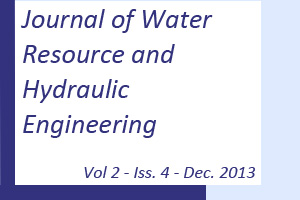 Prioritization of Municipal Water Mains Leakages for the Selection of R&R Maintenance Strategies Using Risk Based Multi-Criteria FAHP Model
Prioritization of Municipal Water Mains Leakages for the Selection of R&R Maintenance Strategies Using Risk Based Multi-Criteria FAHP Model
Authors: Thewodros G. Mamo, Ilan Juran, Isam Shahrour
Full Paper
ABSTRACT
Municipal water network systems are composed of a wide range of complex buried infrastructure. Many of these essential infrastructures have reached or exceeded their design life cycle and need a sound rehabilitation and replacement (R&R) Maintenance Strategies. However, maintaining and repairing such an aging and complex water pipeline network systems in big urban cities presents a unique decision and management challenges for water utility companies with respect to how to carry out the ranking and evaluation process and decide which of these complex wide ranges of buried infrastructure from the networks required replacement or rehabilitation in a cost-effective manner. These decision and management challenges of maintaining water distribution pipeline network infrastructures at nearly the intended design condition by investing the minimum amount of money, and allocating limited resources utility companies have among different projects kept the water utility companies actively searching for innovative approaches for decision support methodologies based on analysis of options, that involves evaluation of many criteria and parameters in order to determine the optimal maintenance strategies. This paper presents how risk based Fuzzy Analytic Hierarchy Process (FAHP) decision approach can be used to rank existing or recently detected multiple leakages form WD pipeline networks. It also demonstrate how this method can benefit the decision making process for the selection of which pipeline required urgent action, and prioritize the optimal alternative rehabilitation and replacement (R&R) Maintenance Strategies by integrating value professional judgments and stakeholder preferences with limited annual budget the water utility companies may have. In conclusion, this FAHP approach would benefit the decision-makers of water utility companies where there are currently no structured approach or methods for making a responsible and defendable decision with clearly demonstrated trade-offs between stakeholder investment and water utility agencies service levels standards and objectives.

